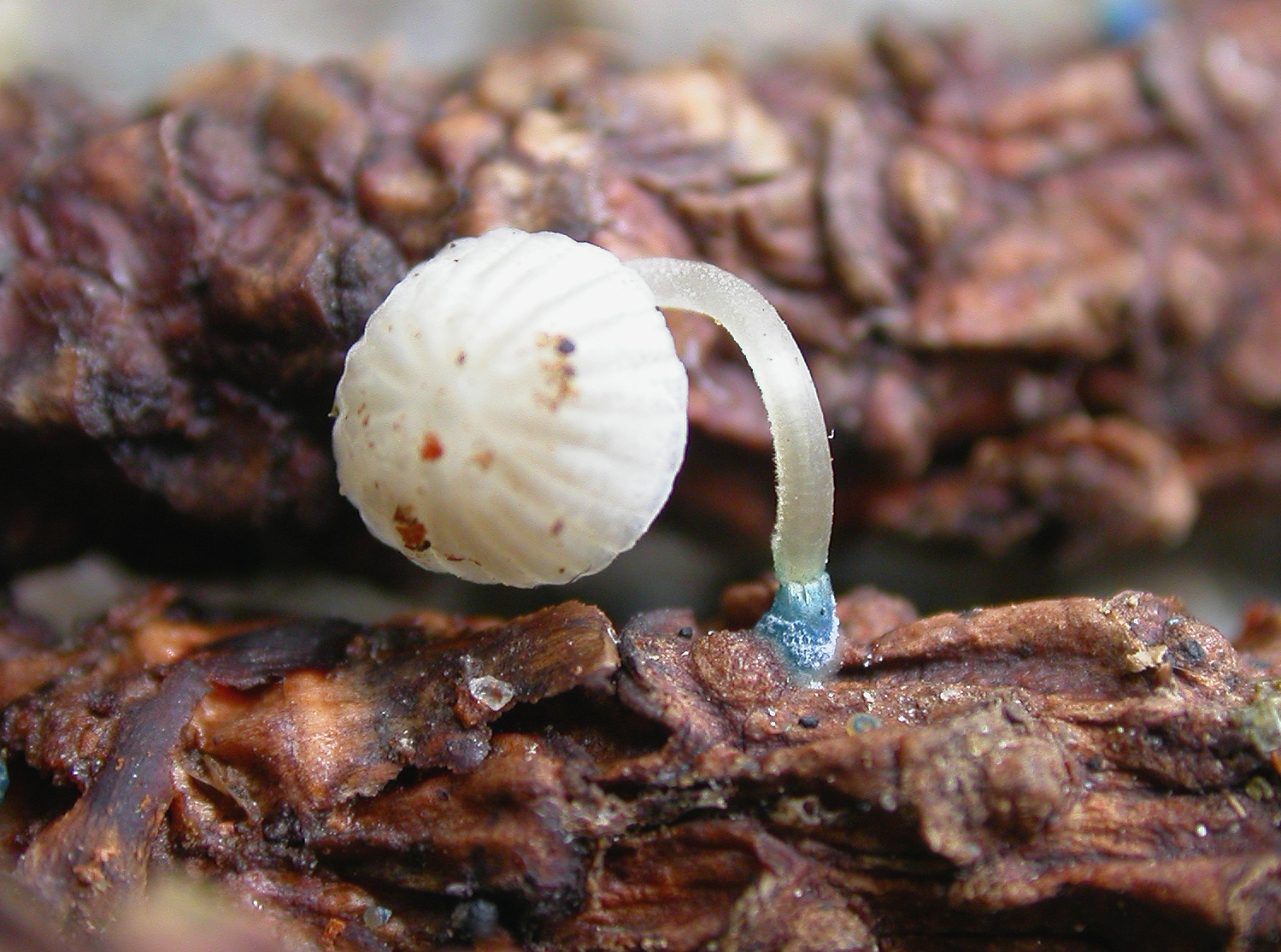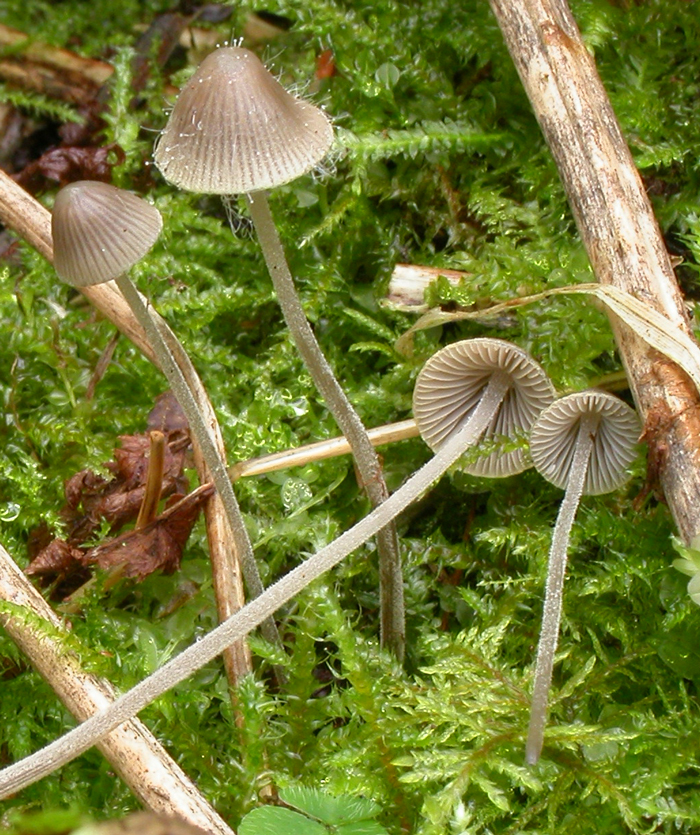Mycena cyanorhiza
Mycena cyanorhiza
Description
1. Hyphae of the pileipellis, 2. Cheilocystidia, 3. Spores, 4. Caulocystidia.
Cap 2-5(-10) mm across, covered with a (separable), gelatinous pellicle, at first ± globose, then hemispherical to parabolical, becoming convex or somewhat depressed, but also with a small papilla, translucent-striate, sulcate, pruinose, glabrescent, somewhat lubricous, initially pale brown, then pale grey with darker centre, becoming almost white with age. Gills 9-14 reaching the stem, ascending, fairly broad or more narrow, adnexed to fairly broadly adnate or almost free, sometimes with a pseudocollarium, whitish or pale grey with whitish edge that is separable as an elastic-tough thread. Stem 5-30(-70) x 0.5-1 mm, cylindrical, equal except for the base which is usually somewhat bulbous, entirely puberulous, glabrescent in the middle part, pale grey to hyaline-white; the base hirsute, sky blue (also in the flesh), springing from a patch of fine, radiating, white fibrils. Odour none. Basidia 18-25 x 6.5-11 µm, clavate, 4-spored, with sterigmata 5-8 µm long. Spores 6.5-9 x 4-5 µm, Q = 1.6-2.2, Qav ˜ 1.8, pip-shaped, amyloid. Cheilocystidia 9-20 x 5.5-7 µm, embedded in gelatinous matter, clavate to obpyriform, with few, simple to branched excrescences 3-14 x 1-1,5 µm. Pleurocystidia absent. Lamellar trama dextrinoid. Hyphae of the pileipellis 1.5-3.5 µm wide, embedded in gelatinous matter, very branched, covered with scattered, simple to branched excrescences, protruding through the gelatinous layer. Hyphae of the cortical layer of the stem 1-3 µm wide, smooth, with caulocystidia up to 60 x 7 µm, simple to furcate or somewhat branched. Clamps present at all tissues.
Ecology and distribution
On conifer (Picea, Pinus and Larix) bark and twigs, e.g. in brush piles. Summer to autumn. Rather rare or very rare. There seems to be a tendency for an occurrence on alkaline soils.


